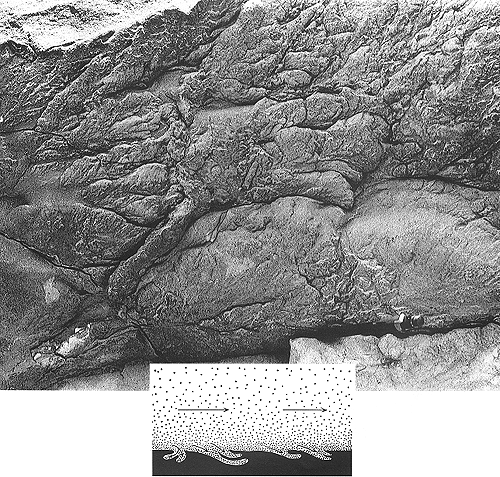
Frondescent casts
Plate 97

Frondescent casts
Plate 97
The shape of these curious, lobate markings strongly reminds one of cabbage leaves. They derive from sand filling small "cul-de-sacs," blind fingerlike furrows with a diverging pattern (see inset). Note that this pattern is opposite of that of dendritic ridges (plate 95); a distinction among the two structures is thus essential. Frondescent casts can be recognized by details of their ornamentations. Here again we see, in the form of fissures, the pelitic crests, or "flames," that separate the sand lobes.
The structure should be another manifestation of combined erosional and deformational effects of the basal portion of a density current. A high concentration of sediment or a particular form of turbulence may have helped in underscouring the bottom. It is difficult to say whether the basal layer of the current was in laminar or turbulent conditions; in the former case, the fluid penetrating the mud bed was more likely dense quicksand rather than water, whereas some sorts of vortexes were the undermining tools in the latter. Whatever the case, the fluid had certainly a high density, whereby one could put these marks in a category of fluid impact or fluid drag features (see also plate 99).
Macigno Formation, northern Apennines.